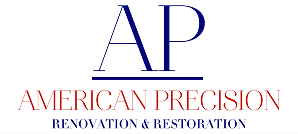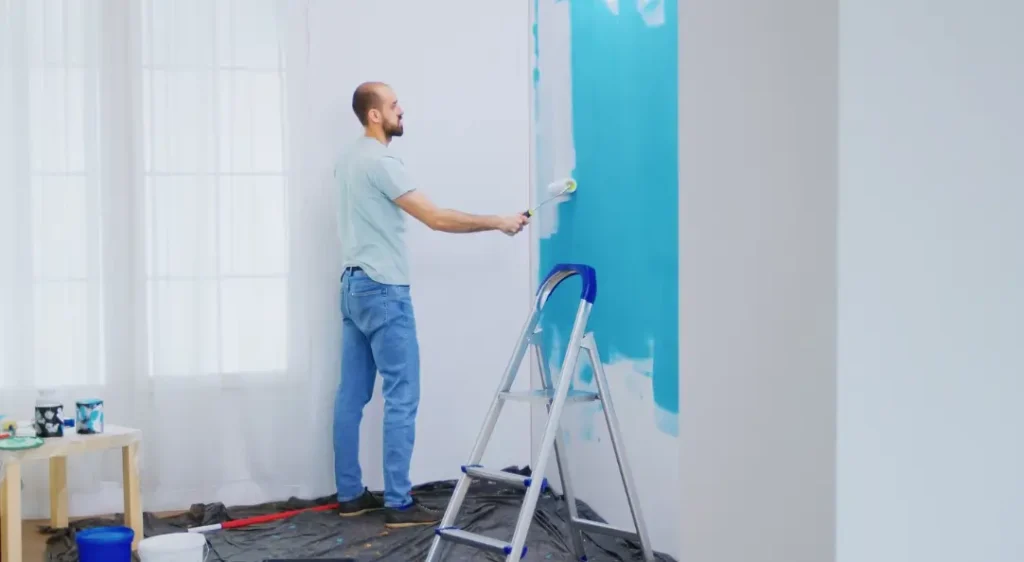Painting services for a 3-bedroom home involve multiple cost factors that vary significantly based on home size, condition, paint quality, and regional pricing differences. Understanding these cost components helps homeowners budget accurately for interior and exterior painting projects while making informed decisions about DIY versus professional services. Accurate cost expectations prevent budget surprises while ensuring adequate funding for quality results.
The investment in professional painting services pays dividends through improved home appearance, increased property value, and long-lasting results that quality materials and expert application provide. While costs may seem substantial initially, professional painting often provides better long-term value than amateur work that requires frequent touch-ups or complete redoing.
Interior Painting Cost Breakdown
Interior painting costs for 3-bedroom homes typically range from $3,000 to $8,000 depending on home size, ceiling height, surface conditions, and paint quality selections. This price range includes professional labor, quality materials, and basic surface preparation for homes in good condition.
Room size calculations form the basis for interior painting estimates. A typical 3-bedroom home contains approximately 1,500-2,500 square feet of living space with 2,000-3,000 square feet of wall surface requiring paint. Ceiling heights significantly affect total surface area and labor requirements.
Surface preparation costs vary dramatically based on existing paint condition, wall damage, and desired finish quality. Homes needing minimal preparation might add $500-1,000 to base painting costs, while properties requiring extensive repairs, patching, or paint removal can add $2,000-4,000 to project totals.
Paint quality selections directly impact both material costs and long-term performance. Premium paints cost $50-80 per gallon compared to $25-40 for basic alternatives, but provide better coverage, durability, and color retention that extends time between repainting projects.
Labor costs typically represent 60-70% of total interior painting project expenses. Professional painters charge $25-50 per hour depending on regional market conditions, experience levels, and project complexity. Skilled painters work more efficiently while achieving superior results that justify higher hourly rates.
Additional services like cabinet painting, wallpaper removal, or specialty finishes add significant costs to basic interior painting projects. Cabinet painting alone can add $2,000-5,000 to project totals, while wallpaper removal might add $1,000-3,000 depending on room size and paper type.
Exterior Painting Investment
Exterior painting costs for 3-bedroom homes range from $4,000 to $12,000 depending on home size, siding type, architectural complexity, and surface preparation requirements. Exterior projects typically cost more than interior work due to challenging working conditions, weather exposure, and extensive preparation requirements.
Siding type significantly affects painting costs and material requirements. Wood siding requires more preparation and premium paints for weather protection, while vinyl or aluminum siding needs less preparation but requires specialized primers for proper adhesion.
Home height and architectural features impact labor costs through safety requirements and access challenges. Two-story homes require ladders or scaffolding that slow progress and increase safety costs. Dormers, bay windows, and detailed trim work require additional time and skilled craftsmanship.
Surface preparation represents the largest variable in exterior painting costs. Homes in good condition might need only power washing and minor touch-ups, while properties with peeling paint, wood rot, or caulk failure can require thousands of dollars in preparation work before painting begins.
Weather protection and timing considerations affect exterior painting schedules and costs. Projects scheduled during peak painting seasons (spring and summer) often cost more due to high demand, while off-season work might offer cost savings but weather-related delays.
Trim and detail work significantly impacts exterior painting costs because these areas require hand brushing and careful attention to achieve professional results. Homes with extensive trim, shutters, and architectural details require more time and skilled labor than simple ranch-style properties.
Regional Cost Variations
Geographic location dramatically affects painting service costs due to labor rates, material costs, and local market conditions. Understanding regional variations helps homeowners set realistic budget expectations and evaluate contractor proposals accurately.
Urban areas typically command higher painting costs due to increased labor rates, higher business expenses, and greater demand for services. Metropolitan areas might see costs 20-50% higher than rural markets for identical work scope and quality levels.
Cost of living adjustments in different regions directly impact painter wages and business operating expenses. Areas with high housing costs, taxes, and business expenses necessarily charge more for painting services to maintain viable business operations.
Seasonal demand patterns vary by region and affect pricing throughout the year. Northern climates concentrate exterior painting into shorter seasons, creating higher demand and pricing during optimal weather periods. Southern markets often provide more consistent year-round demand and pricing.
Local competition levels influence pricing strategies and service availability. Markets with many qualified painters often provide more competitive pricing, while areas with limited professional options might see higher costs due to reduced competition.
Material transportation costs affect pricing in remote areas where paint and supplies must travel long distances. These logistical expenses get passed through to customers in the form of higher material costs or delivery charges.
Quality Level Impact on Costs
Paint quality selections significantly affect both immediate project costs and long-term value. Understanding quality differences helps homeowners make informed decisions that balance upfront costs with performance expectations and maintenance requirements.
Premium paint products cost 50-100% more than basic alternatives but provide superior coverage, durability, and color retention. These paints often require fewer coats for complete coverage and last significantly longer before requiring repainting.
Professional-grade paints available to contractors often provide better performance than retail alternatives while costing less due to volume purchasing arrangements. Contractors pass these savings through to customers while providing access to superior products.
Primer requirements vary based on surface conditions and paint quality selections. Quality paints often provide better coverage over existing colors without primer, while budget alternatives might require primer applications that increase total project costs.
Application techniques affect paint performance regardless of quality levels. Professional application methods ensure optimal paint performance and appearance while maximizing coverage efficiency that reduces material waste and costs.
Warranty considerations reflect paint quality and contractor confidence in their work. Premium paints and professional application often include longer warranties that protect homeowner investments and provide recourse if problems develop.
Professional vs DIY Cost Analysis
Comparing professional painting services with DIY approaches requires considering tool costs, time investment, material waste, and result quality differences. While DIY projects eliminate labor costs, other factors often make professional services more economical.
Tool and equipment costs for DIY painting projects can exceed $500-1,000 for quality brushes, rollers, ladders, drop cloths, and other necessary supplies. Professional painters already own these tools and spread their costs across multiple projects.
Time investment for DIY interior painting often exceeds 40-80 hours for complete 3-bedroom homes, while exterior projects might require 60-120 hours depending on home size and condition. Professional painters complete the same work in 20-40% of the time through experience and efficiency.
Material waste in DIY projects typically runs 15-25% higher than professional applications due to inexperience with coverage calculations, application techniques, and product selection. These waste factors increase total project costs significantly.
Quality differences between professional and amateur work affect both immediate appearance and long-term performance. Professional results typically last longer and look better, providing better value despite higher upfront costs.
Mistake correction costs in DIY projects can exceed professional service costs when paint runs, color mistakes, or application problems require complete redoing. Professional painters guarantee their work and correct problems at no additional cost to homeowners.
Additional Cost Considerations
Several additional factors can significantly impact painting project costs beyond basic labor and materials. Understanding these potential expenses helps homeowners budget accurately and avoid cost surprises during project execution.
Permit requirements for exterior painting might apply in historical districts or homes with lead paint concerns. Permit costs typically range from $50-200 but can delay projects if not obtained before work begins.
Lead paint testing and remediation adds substantial costs to homes built before 1978 where lead-based paints might be present. Testing costs $200-400, while certified remediation can add $2,000-10,000 to project totals depending on lead paint extent.
Color consultation services help homeowners select appropriate colors and finishes but typically add $200-500 to project costs. These services often prevent costly color mistakes that require repainting entire rooms or home exteriors.
Furniture moving and protection services save homeowner time and effort while protecting belongings from paint damage. These services typically add $200-800 to interior painting projects depending on home size and furnishing density.
Cleanup and disposal services ensure proper paint waste disposal and site restoration but add costs to project totals. Professional cleanup typically adds 5-10% to total project costs while ensuring properties are restored to pre-project conditions.
Emergency repairs discovered during preparation work can significantly impact project costs if structural problems, water damage, or pest issues are uncovered. Budget 10-20% contingency funds for unexpected repairs that might be needed for proper painting preparation.
Painting services for 3-bedroom homes represent significant investments that provide substantial returns through improved appearance, increased property values, and long-term surface protection. Understanding cost factors helps homeowners budget appropriately while making informed decisions about service levels, paint quality, and contractor selection. Quality painting services provide value that justifies their costs through superior results, professional warranties, and peace of mind that comes with expert workmanship.

